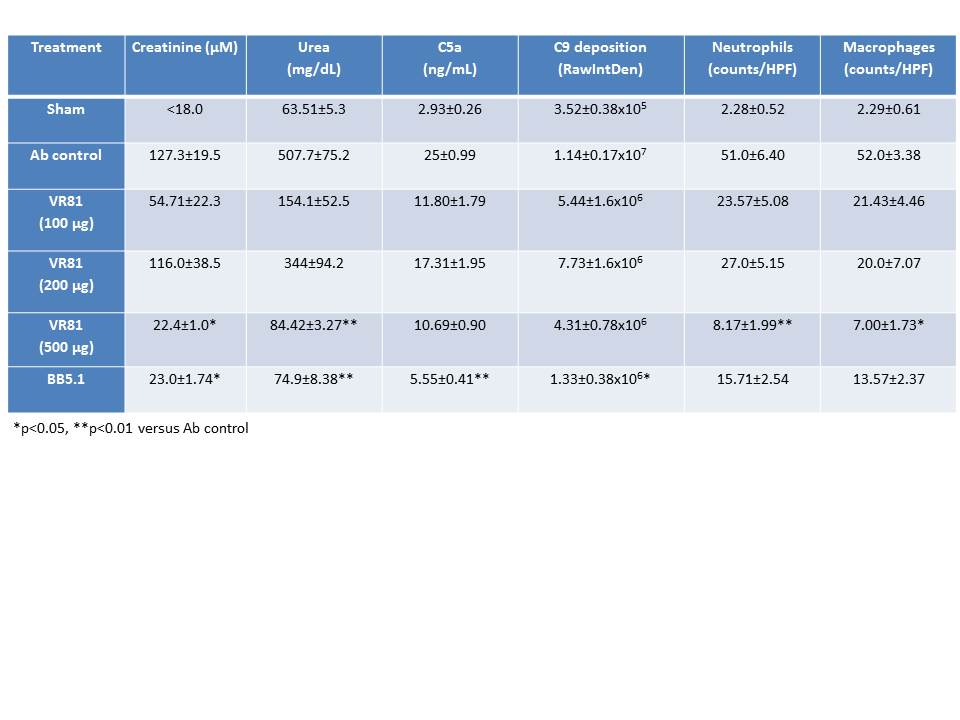Blockade of the G-CSF receptor is protective in a mouse model of renal ischemia reperfusion injury
Jennifer McRae1, Anjan K. Bongoni1, Evelyn K. Salvaris1, Nella Fisicaro1, Ingela Vikstrom2, Adrianna Baz Morelli2, Martin J. Pearce2, Peter J. Cowan1,3.
1Immunology Research Centre, St Vincent's Hospital, Melbourne, Australia; 2CSL Ltd, Melbourne, Australia; 3Department of Medicine, University of Melbourne, Melbourne, Australia
Background: Ischemia-reperfusion injury (IRI) is a complex inflammatory process that detrimentally affects the function of transplanted organs. Several pathways contribute to cell death and microvascular dysfunction in IRI, including activation of the innate and adaptive arms of the immune system. Inhibiting complement, a key component of innate immunity, by C5 blockade has been shown to protect against renal IRI in mice. In this study, we investigated whether targeting neutrophils with VR81, a monoclonal antibody recognising the granulocyte colony stimulating factor receptor (G-CSFR), would reduce inflammation and protect against injury in a mouse model of renal IRI. The anti-C5 antibody BB5.1 was used for comparison.
Methods: Male 10-12 week old C57BL/6 mice underwent right nephrectomy followed by clamping of the left renal pedicle for 22 min, or right nephrectomy only (Sham), at 37ºC. Mice (n = 5-8 per group) were injected i.p. at 24 hr pre-ischemia with VR81 (100, 200 or 500 μg), BB5.1 (100 μg), or isotype-matched antibody (Ab) control (500 μg). Mice were euthanased 24 hr after reperfusion, and serum and plasma samples were collected to assess renal function (creatinine, urea) and complement activation (C5a ELISA). Kidneys were harvested to analyse complement C9 deposition and immune cell infiltration by immunofluorescence.
Results: Compared to Sham, the Ab control IRI group showed significantly increased creatinine, urea and C5a, deposition of C9, and infiltration of neutrophils and macrophages. As expected, C5 blockade with BB5.1 markedly reduced renal injury and inflammation, reflected in significantly lower creatinine, urea, C5a and C9 deposition versus Ab control. Surprisingly, VR81 was also strongly protective in a dose-dependent manner, with the 500 μg dose significantly reducing creatinine, urea and cellular infiltration.

Conclusion: Unexpectedly, G-CSFR blockade using VR81 significantly protected against renal IRI with an efficacy similar to that of anti-C5 treatment. Protection was associated with markedly reduced infiltration by neutrophils and macrophages. G-CSFR blockade is thus a promising new approach to reduce IRI and improve organ transplant function.
